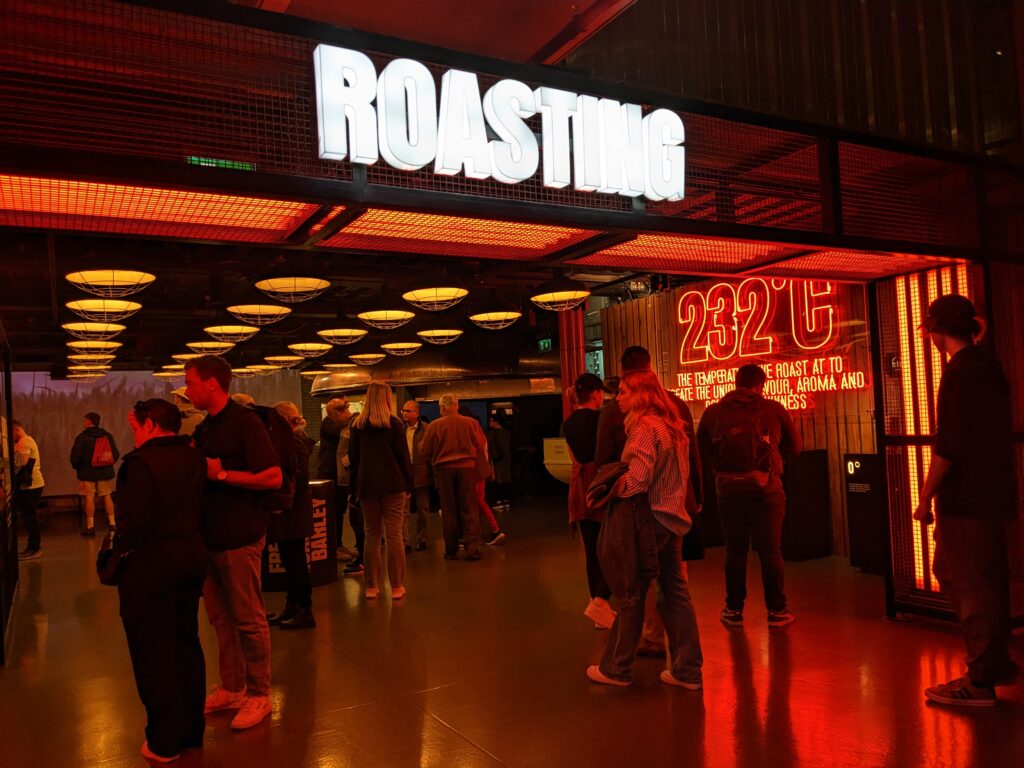It’s not easy to find a pocket of the globe unfamiliar with Guinness. The dry stout is brewed in nearly 50 countries and available in over 120, yet it is most associated with one in particular: Ireland, the land where it was first brewed by Arthur Guinness over 250 years ago. Its connection to its country of origin is intrinsic and unavoidable. In the brewery at St James’s Gate, Dublin, Guinness is brewed with water from the Wicklow Mountains outside of the city, and its iconic logo — the Celtic harp — is a mirror image of the state emblem. This has contributed to the popularity of Dublin’s Guinness Storehouse as a tourist attraction; since it opened in 2000, it has hosted over 22 million visitors.

Acknowledging that these visitors are coming from all around the world, the Storehouse presents the industrial process of brewing and distributing Guinness in a universal style. The beer’s primary ingredients — barley, hops and water — are represented in a tangible manner that evokes the scale required for mass production. For instance, visitors to the Storehouse are greeted by an enormous vat of barley and an indoor waterfall, which immediately provide a basic understanding of the brewing process without a lengthy technical description. The various stages of roasting, mashing and fermenting are similarly interpreted, with roasting represented by red neon lights and the fermenting process depicted in an easy-to-follow graphic.

Beyond the science of brewing, the Storehouse is careful to demonstrate the other essential steps required for the industry of mass production. Sections of the museum are dedicated to the coopers who created the barrels in which Guinness was stored and the ships and trains that transported their product all across the globe. The inclusion of these tangential industries help place the Guinness factory in the wider context of Dublin’s industrial history, illustrating how one product links dozens of industries and provides employment for hundreds of people across the city.
Connecting the production and sale of Guinness to other industries provides a more nuanced understanding of the beer’s role in the city, as well as an appreciation for industrial heritage’s importance as a whole. One leaves the Storehouse feeling like Guinness is not just a beverage to be enjoyed, but a critical influence on the local economy. What the Storehouse lacks, however, is an interpretation of how this major economic and cultural phenomenon shaped the city’s social history. What effect did Guinness’s rapid growth have on the lives of its employees? Did its presence in Dublin change the way people worked or spent their free time? As a local economic force, how did the Guinness family influence Irish politics?
As the purpose of the Guinness Storehouse is not to provoke but to promote their product, these questions go unanswered. This is not to say that a trip to their premises is boring or uninformative — in fact, I learned quite a bit about a favourite drink and thoroughly enjoyed my time there. Ultimately, the Storehouse is like a TV advert with incredibly high production value that you can walk into and spend a few hours in. It’s fun, colourful and entertaining — and definitely a must-see on any trip to Dublin — but will steer you towards the nearest pub rather than any deeper thought.

